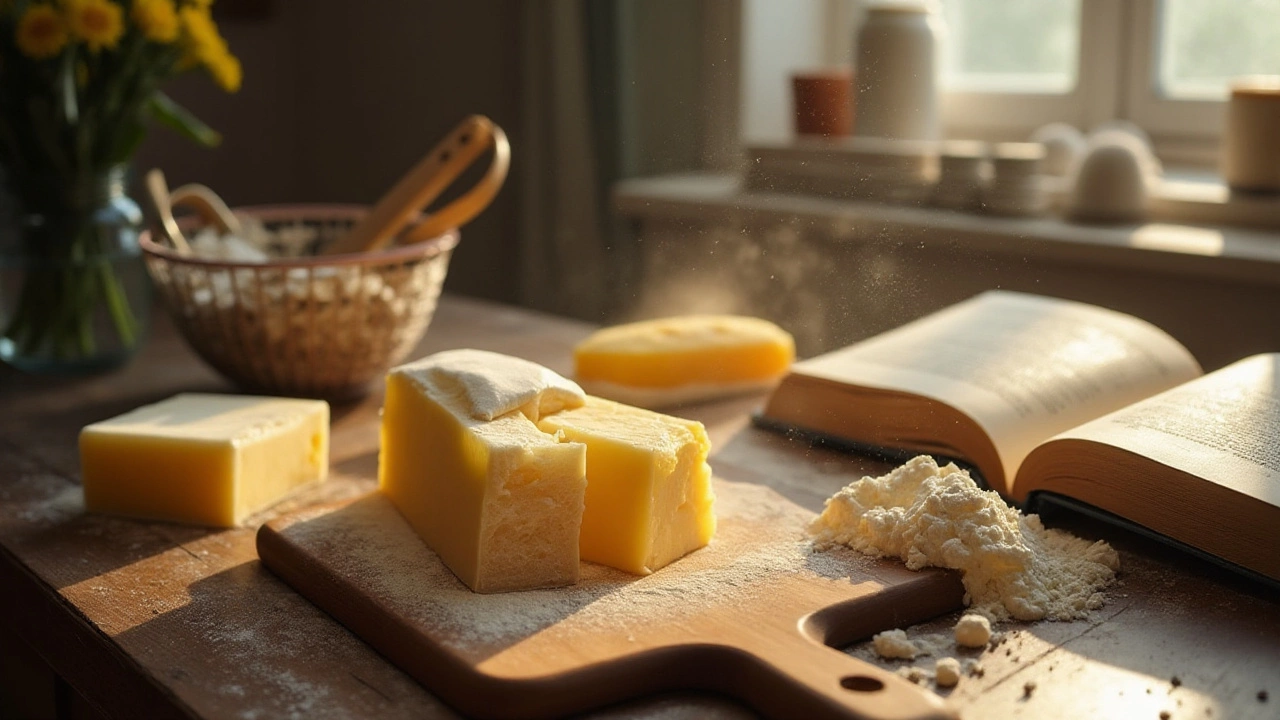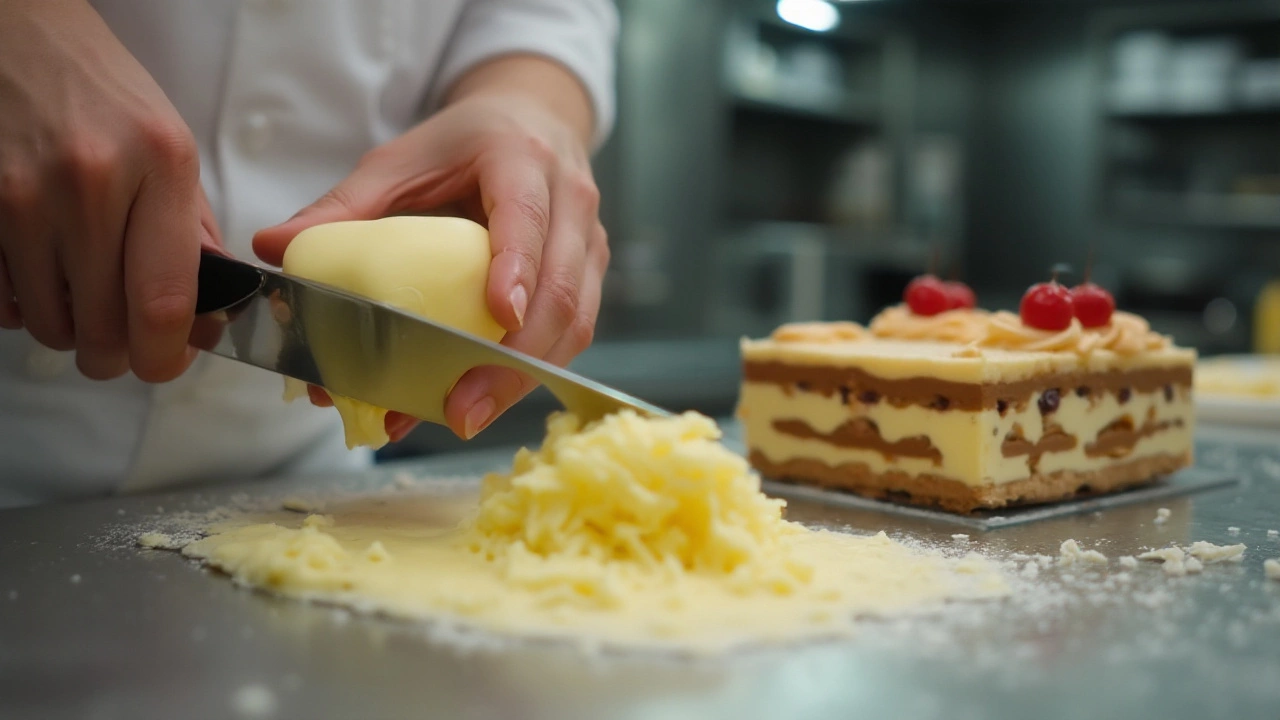
Mozzarella cheese, renowned for its creamy texture and mild flavor, is a versatile ingredient, often starring in pizzas and salads. But did you know it can create surprising magic in desserts like tiramisu? Whether you're experimenting with traditional recipes or introducing an innovative twist, properly defrosting mozzarella is key to achieving the best results.
Delving into the art of cheese defrosting may seem trivial, but the impact on texture and taste can be significant. Improper thawing can leave you with a watery mess, while mastering this process ensures your cheese retains its signature stretch and richness, especially when folded into layers of luscious tiramisu.
If you've ever wondered how to keep mozzarella fresh and flavorful from freezer to plate, this guide will walk you through the essentials. Armed with a few simple tips, you'll be steaming ahead in creating dishes that sing with authenticity and creativity.
- Understanding Mozzarella Cheese
- Defrosting Methods
- Best Practices for Storage
- Mozzarella in Tiramisu
- Creative Culinary Uses
Understanding Mozzarella Cheese
Mozzarella cheese, frequently associated with the vibrant flavors of Italy, is a type of cheese that’s beloved for its stretchy quality and mild, creamy taste. Traditionally made from the milk of water buffaloes raised in Italy, today you'll most likely encounter mozzarella produced with cow's milk. What makes this cheese stand out is its unique texture, which is a product of the pasta filata technique. This process involves spinning and kneading the curd while it’s still hot, creating the elastic and stringy quality we all enjoy. As its origins trace back to the region of Campania, mozzarella has been historically linked with the classic Margherita pizza, where it pairs wonderfully with fresh tomatoes and basil.
Being aware of different mozzarella types is crucial. The fresh, soft variety is typically packed in a brine or whey solution, which helps maintain its moisture content and subtle sweetness. On the other hand, low-moisture mozzarella is usually firmer and has a longer shelf life. This variant is commonly shredded and used as a topping for heartier dishes that require a golden, bubbly finish. Nutritionally, mozzarella provides a substantial amount of protein and calcium, essential for bone health, while being relatively low in calories compared to other cheeses.
Pierre Hermé, a celebrated name in the culinary world, once remarked, "The delicate nature of mozzarella elevates a dish, weaving simplicity with refinement."
At times, you may like to know how such a humble cheese captivates many palates worldwide. The secret lies in its versatility. Besides being a pizza staple, mozzarella can be enjoyed in salads, with slices of juicy tomatoes and a drizzle of olive oil, or as part of a sumptuous caprese salad. Some enthusiasts even explore its potential in desserts, such as tiramisu, where it can add a surprising texture alongside the layers of mascarpone and espresso-soaked ladyfingers. Given its broad range of applications, understanding how to store and handle mozzarella properly is key to harnessing its full culinary potential. Whether stored in the fridge or the freezer, the correct methods ensure that it retains its smooth texture and mild flavor for when creativity strikes in the kitchen.
Defrosting Methods
Defrosting mozzarella cheese is more of an art than science, and while it might seem straightforward, doing it right preserves the cheese's texture and taste for the best culinary experience. Often, cheese aficionados suggest planning ahead and defrosting in the refrigerator as the most reliable method. This approach allows the cheese to thaw gradually, preserving its structure and moisture, taking anywhere from 12 to 24 hours depending on size. The key is patience, letting the cheese slowly come back to life, with its creamy texture ready to be enjoyed in your favorite dishes.
Another popular method when time is a constraint is using cold water. By sealing the mozzarella tightly in a plastic bag, you can submerge it in a bowl of cold water. This technique speeds up the process, allowing the cheese to thaw quicker, typically within two to three hours. Ensure that the bag is completely airtight, to prevent water from seeping in, which can turn the cheese soggy. If done carefully, this method can be a lifesaver for last-minute cooking plans without compromising on flavor or texture.
Some might resort to the microwave for rapid defrosting, but this method should be approached with caution. While using a microwave can defrost mozzarella in mere minutes, it often results in uneven melting, potentially making part of the cheese rubbery. If you choose this method, use the microwave's defrost setting and minimally timed bursts, usually no more than 30 seconds at a time, checking frequently to ensure the cheese isn't overheating. This should be your last option and preferably done only with shredded mozzarella which can tolerate this aggressive approach slightly better.
In all methods, remember to handle your cheese tips with care once defrosted. Avoid refreezing any leftover portions again as it can drastically reduce quality. Instead, plan your meals accordingly to minimize waste. Properly thawed mozzarella should smell sweet and fresh, and not overly sour or musty. An interesting piece of advice comes from a cheesemonger during a food expo, who mentioned, "The secret to great cheese is treating it with respect, even as you prepare to eat it."
In summary, each method has its merits and best-use scenarios. Whether you're exposing your mozzarella to a gradual defrost in the fridge or the slightly speedier cold water trick, always aim for a consistent texture that speaks volumes in flavor. Engaging in the practice of these defrosting techniques means you’re prepared for culinary adventures, from family dinners to an impromptu batch of mozzarella storage inspired tiramisu, creating delightful experiences every time.

Best Practices for Storage
Preserving the quality of mozzarella begins with understanding its storage needs. This cheese, celebrated for its elasticity and creamy texture, remains most pristine when handled with care. When purchasing mozzarella, always check the packaging for any signs of moisture or damage as these can accelerate spoilage. Once opened, it's crucial to store it at a consistent, cold temperature to keep bacteria at bay and maintain that delightful stretch mozzarella is known for. When storing in the refrigerator, consider wrapping the cheese in a damp paper towel or keeping it in its original brine to retain moisture, ensuring it stays as fresh as possible until you're ready to bring it into your cooking space.
For longer preservation, freezing mozzarella can be an option, but it demands a delicate approach. Before freezing, chop or grate the cheese—this will make defrosting more manageable and prevent unnecessary texture changes. Portioning the cheese into meal-sized amounts will not only speed up thawing time but also reduce the risk of refreezing, which can compromise quality. Once portioned, place the cheese in an airtight freezer bag, squeezing out as much air as possible to prevent ice crystal formation. Lastly, label your bags with the date of freezing, as it’s best used within two months for optimal flavor and texture.
Expert Insights
Many chefs swear by specific storage rituals. Renowned for their cheese expertise, some chefs like Alice Waters advocate for wrapping mozzarella loosely in wax paper, which allows a bit of air circulation.
Alice Waters once noted, "The secret to enjoying cheese is treating it as a living thing, which requires a gentle touch and an appreciation for its natural evolution."Such insights are invaluable in learning how to nurture mozzarella for both flavour and longevity.
Sometimes, learning from mistakes is just as important as following guidelines. A common pitfall is placing mozzarella alongside pungent foods in the fridge, as it can easily absorb odors. Attempt to dedicate a drawer or a distinct space for storing cheeses to prevent this mix-up. Also, avoid using plastic wrap directly touching the cheese's surface over prolonged periods. The wrapping can suffocate the cheese, altering its taste and potentially resulting in a rubbery texture.
Understanding Storage Needs
Mozzarella stored improperly can invite unwanted results. To avoid such pitfalls, be mindful of the environment in which it's kept. Temperatures above 4°C (39°F) are breeding grounds for bacteria, which no damp towel or tightly-sealed bag will combat. It's best practice to maintain a separate thermometer in your fridge to monitor its cooling efficiency. Humidity control is another vital aspect; high moisture levels encourage mold growth. If you're in pursuit of dairy delicacies free from such troubles, dehumidifiers or silica gel packs in larger storage fridges can work wonders.
Mozzarella in Tiramisu
Traditionally, tiramisu is all about the dance of flavors between mascarpone and the espresso-soaked savoiardi. Yet, venturing into the realm of culinary experimentation, chefs and home cooks alike have found intriguing ways to integrate mozzarella into this beloved dessert. With its unique texture and ability to blend harmoniously, mozzarella becomes the star of a reinvented tiramisu. This journey from savory to sweet might raise an eyebrow or two, but it’s worth considering.
The key to incorporating mozzarella into tiramisu is in the defrosting and preparation. Mozzarella, once properly thawed, can be shredded and combined with traditional ingredients to add a subtle richness not found in its creamier counterpart, mascarpone. It stretches slightly when melted, creating layers that pull gently as you tuck into each forkful. The trick here lies in moderation and achieving a balance where mozzarella complements rather than overwhelms.
Experienced pastry chefs might choose to pair defrosted mozzarella with lighter creams. This approach softens its presence, weaving it into the tiramisu’s familiar notes. Some may even experiment with adding a hint of smokiness by using smoked mozzarella, which breaks the monotony and introduces a gentle complexity to each bite. Curious cooks can also infuse the cheese with vanilla or almond extract before adding it to the layers for an exciting twist on the classic recipe.
Consider this delightful prospect: bringing mozzarella into your tiramisu not only refreshes a time-honored dessert but also serves as a delightful surprise to guests familiar with the dish. It illustrates the beauty of fusion in cooking—ingredients from seemingly opposite ends of culinary spectrums meeting in the middle to present a unified, sumptuous dish.
As gastro-innovator Carla Burnshared states, "When you give mozzarella a chance in desserts, it becomes a canvas for flavors yet unexplored." Her words echo the sentiment of many who have let tradition be their guide yet fearlessly aimed to redefine where and how ingredients can shine.
If you’re still hesitant, a playful way to test the waters might involve crafting individual tiramisu cups featuring mozzarella layers. This presentation invites diners to partake in one serving and draw their own conclusions about this sweet, unexpected union. Such adventures in flavor not only widen one's palate but also keep the spirit of cooking freshly inspired and delightfully unpredictable.

Creative Culinary Uses
Mozzarella cheese is celebrated for its role in dishes that range from the classic to the adventurous, often drawing upon its unique ability to enhance flavors and textures. While many associate it with Italian cuisine, this cheese's versatility knows no bounds. Few might expect it to make a splash in desserts like tiramisu, yet it performs surprisingly well, bringing a distinct softness to each bite. Introducing mozzarella into your dessert repertoire could elevate your cooking from the routine into the realm of the extraordinary.
Consider incorporating mozzarella into your homemade cheese-topped omelets or savory soufflés, where its melt-friendly nature can create the perfect airy lift. The moisture in mozzarella lends an added depth to these dishes, harmonizing beautifully with softer egg textures. For the adventurous home cook, pairing mozzarella with sweeter ingredients such as figs or berries, drizzled with a touch of honey, can result in a delightful contrast of flavors. Present these on a cheese board alongside sharp cheddar and creamy blue cheese for a medley that surprises and pleases the palate.
Incorporate cheese tips into your routine by blending grated mozzarella into your next batch of mashed potatoes or cauliflower puree. This trick not only boosts the nutritional profile but also enriches the mix with a buttery mouthfeel. To make a bold culinary statement, try mozzarella-stuffed meatballs or sliders to bring an unexpected gooey center that turns an ordinary meal into a touch of gourmet. Such creative executions are bound to make a lasting impression at any dinner party or family gathering.
As per culinary experts, cheese doesn't have to be confined to particular meal courses. A beloved chef, Giada De Laurentiis, said:
"Cheese is a living food that transforms the way we enjoy a meal, just like a melody changes the feel of a song."This perspective encourages chefs, home cooks, and food lovers to think beyond the ordinary uses of mozzarella and delve into its potential in a myriad of creative ways. Exploring these distinctive applications can infuse enthusiasm into daily cooking and allow new traditions to blossom around the dining table.